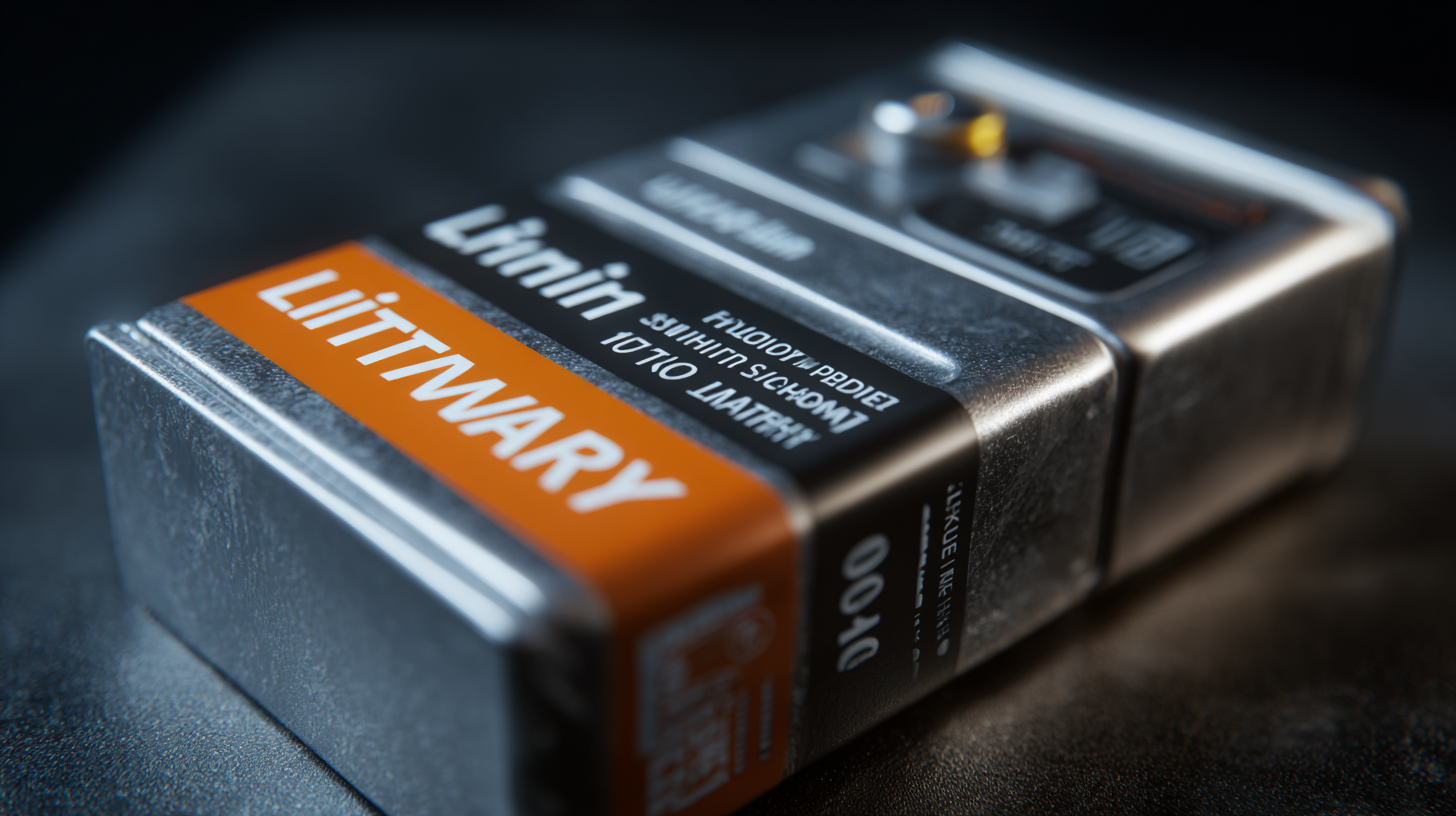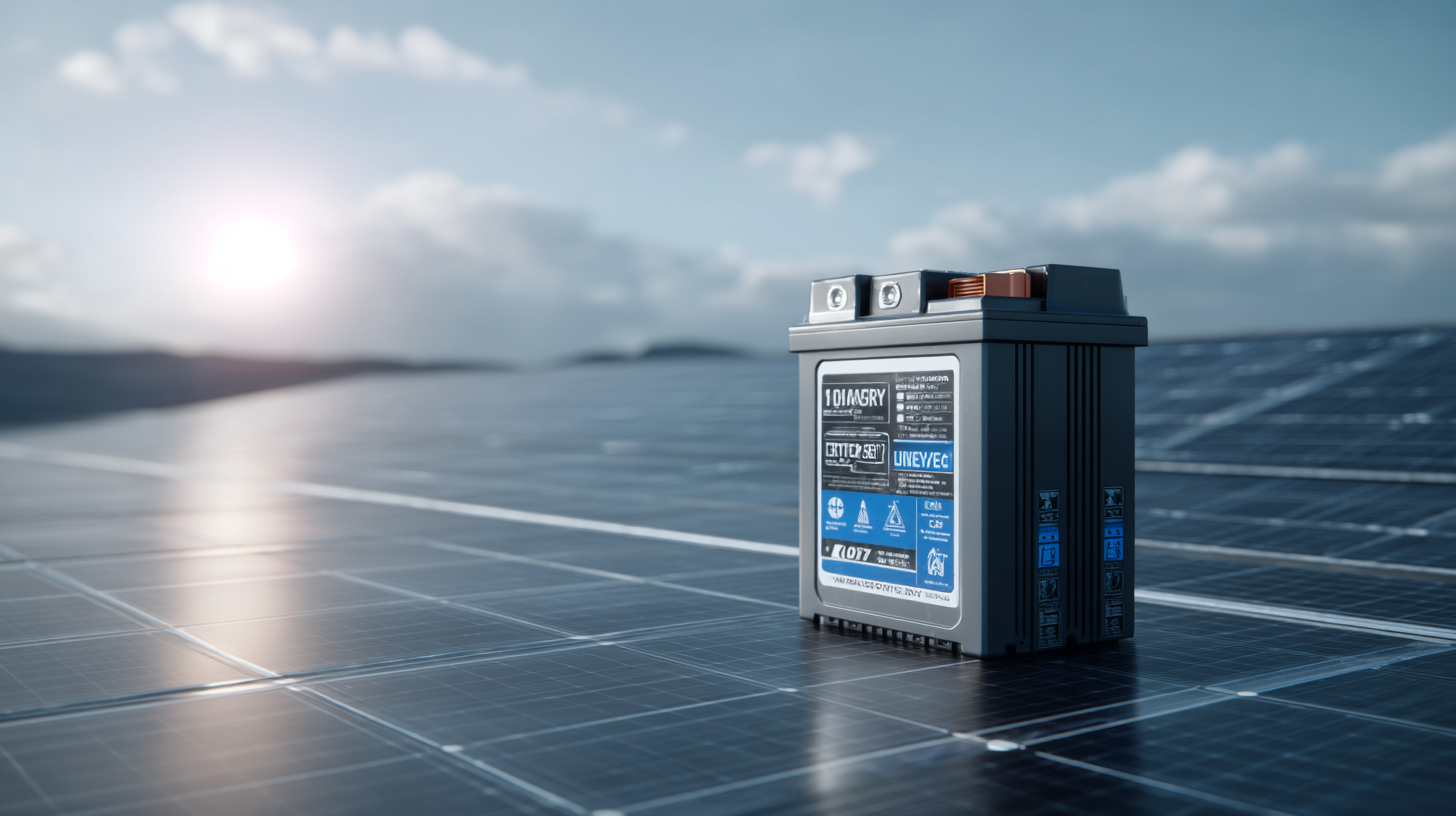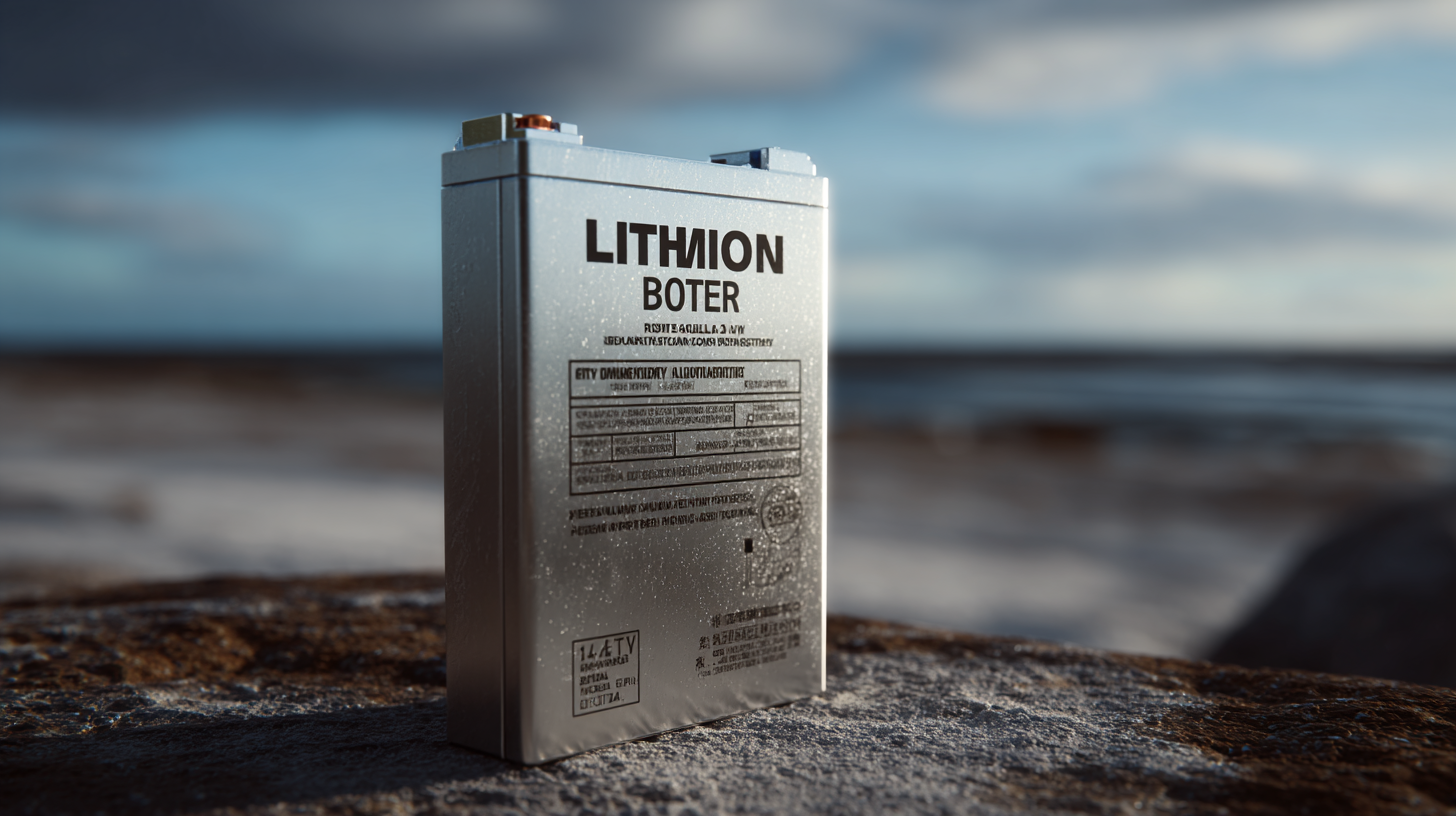Exploring the Top Features of the Best Lithium Ion Solar Battery for Global Buyers
In the quest for sustainable energy solutions, the Lithium Ion Solar Battery has emerged as a frontrunner, offering exceptional efficiency and storage capabilities for solar power users around the globe. As the demand for renewable energy sources continues to rise, understanding the top features of these batteries is crucial for informed purchasing decisions. This blog will guide you through the essential aspects of the best Lithium Ion Solar Batteries on the market, ensuring that global buyers are well-equipped to choose a product that meets their unique energy needs. From capacity and lifespan to charging speeds and safety features, we'll explore what makes these batteries a reliable choice for harnessing solar energy, helping you make the most of your investment in clean technology.

Key Characteristics of Lithium Ion Solar Batteries for Sustainable Energy Solutions
When it comes to sustainable energy solutions, lithium-ion solar batteries represent a critical advancement in energy storage technology. Characterized by their high energy density, these batteries can store and release energy more efficiently than older technologies. According to a report by the International Energy Agency (IEA), the global market for lithium-ion batteries is expected to surpass $100 billion by 2025, highlighting a growing demand for efficient energy storage solutions to complement solar power systems.
One of the standout features of lithium-ion solar batteries is their long lifespan, often reaching over 10 years with appropriate usage. This longevity, coupled with a charge cycle efficiency of around 90-95%, makes them an attractive option for both residential and commercial applications. A study conducted by BloombergNEF indicates that as the cost of lithium-ion batteries continues to decline—expected to decrease by as much as 50% by 2030—adoption rates for solar energy systems that incorporate these batteries will rise significantly, leading to more sustainable energy practices globally. This transition reflects not only economic benefits but also a shift towards environmentally responsible energy consumption.
Comparative Analysis: Lithium Ion vs. Other Solar Battery Technologies
When comparing lithium-ion batteries with other solar battery technologies, it's essential to consider various factors such as lifecycle sustainability, energy efficiency, and economic viability. Recent studies have highlighted the environmental impacts of lithium-ion batteries, particularly in terms of their supply chain, which includes recycling and the mining of raw materials. For instance, a life cycle comparison of industrial-scale lithium-ion battery recycling and mining supply chains reveals significant differences in sustainability outcomes. This indicates that while lithium-ion batteries are popular for energy storage, the push towards more sustainable practices in battery production and recycling is critical.
Tips for selecting the best solar battery technology include evaluating the long-term environmental impact of each battery type and considering the total cost of ownership. Moreover, understanding the recycling options available for lithium-ion batteries can help in making an informed decision, as advances in recycling technologies can enhance the sustainability of these batteries significantly.
Another notable comparison comes from evaluating alternative battery technologies, such as sodium-ion and redox-flow batteries. These options present unique advantages like lower costs or improved scalability, making them worth considering for certain applications in renewable energy systems. By carefully analyzing these features, global buyers can choose the right battery technology that aligns with both their energy needs and sustainability goals.

Optimal Applications for Lithium Ion Solar Batteries in Various Industries
Lithium-ion solar batteries are revolutionizing energy storage solutions across various industries, thanks to their efficiency and reliability. In the renewable energy sector, these batteries are increasingly being adopted for large-scale solar power systems. According to a report by the International Renewable Energy Agency (IRENA), the global capacity of lithium-ion batteries for energy storage is projected to reach 300 GWh by 2030, driven largely by advancements in solar energy. This makes them an ideal choice for managing the intermittent nature of solar power, enabling businesses to store excess energy generated during peak sunlight hours for use during periods of low generation.
In the electric vehicle (EV) industry, lithium-ion solar batteries play a crucial role in enhancing sustainability. Data from the International Energy Agency (IEA) indicates that EV sales are expected to surpass 30% of total vehicle sales by 2030, with a significant portion of these vehicles utilizing solar energy as part of their charging infrastructure. By integrating lithium-ion batteries with solar panels, EV manufacturers can significantly reduce the carbon footprint of electric vehicle operations and contribute to a greener future. As industries continue to prioritize sustainability, the versatility of lithium-ion solar batteries will become increasingly vital across various sectors.
Exploring the Top Features of the Best Lithium Ion Solar Battery for Global Buyers - Optimal Applications for Lithium Ion Solar Batteries in Various Industries
| Feature | Description | Optimal Applications |
|---|---|---|
| High Energy Density | Allows for more energy storage in a smaller size, translating to efficient use of space. | Residential solar systems, electric vehicles. |
| Long Cycle Life | Supports numerous charge and discharge cycles without significant degradation. | Commercial solar installations, uninterrupted power supplies (UPS). |
| Fast Charging Capability | Allows for rapid recharging, maximizing the use of solar energy during the day. | Off-grid solar systems, emergency backup systems. |
| Safety Features | Built-in safeguards against overheating and overcharging. | Residential energy storage, commercial use where safety is a priority. |
| Environmental Sustainability | Manufactured with sustainable practices and recyclable materials. | Solar energy projects focused on green initiatives. |
Cost-Benefit Analysis: Investing in Lithium Ion Solar Batteries for Long-Term Savings
Investing in lithium-ion solar batteries can lead to significant long-term savings for homeowners. Recent studies indicate that pairing solar photovoltaic (PV) systems with battery energy storage can reduce electricity imports from the grid by up to 84%. This reduction not only lowers energy bills but also enhances energy independence, making it a smart choice in today's fluctuating energy market. With the global transition towards zero-carbon energy sources aiming for substantial deployment by 2050 or 2060, the demand for efficient battery solutions is likely to increase, driving down costs further.
**Tips:** To maximize savings, consider systems that allow for increased self-consumption of generated solar energy—home batteries can double the amount of energy used directly on-site. Additionally, evaluate the total costs of ownership, including installation and maintenance, against potential savings on energy bills to ensure a positive return on investment.
As utility-scale solar costs continue to decline and home battery technologies improve, many homeowners are questioning whether these systems make financial sense. A detailed analysis of cost versus savings shows that, by 2025, investing in these technologies could be more viable than ever, especially in regions experiencing rising electricity costs. Exploring available financial incentives can also enhance the appeal of this investment during the transition to a more sustainable energy future.
Cost-Benefit Analysis of Lithium Ion Solar Batteries
This chart illustrates the cost-effectiveness of investing in lithium-ion solar batteries over a 10-year period. It compares initial investment, maintenance costs, and estimated savings from energy independence.
Understanding the Environmental Impact of Lithium Ion Solar Batteries in Renewable Energy
 Lithium ion solar batteries have emerged as a pivotal component in the renewable energy landscape, offering both efficiency and sustainability. However, understanding their environmental impact is crucial for global buyers considering their usage. These batteries are designed to harness solar energy effectively, reducing reliance on fossil fuels and minimizing carbon emissions. The production and disposal of lithium ion batteries must be managed responsibly to ensure that their ecological footprint remains minimal.
Lithium ion solar batteries have emerged as a pivotal component in the renewable energy landscape, offering both efficiency and sustainability. However, understanding their environmental impact is crucial for global buyers considering their usage. These batteries are designed to harness solar energy effectively, reducing reliance on fossil fuels and minimizing carbon emissions. The production and disposal of lithium ion batteries must be managed responsibly to ensure that their ecological footprint remains minimal.
When integrating lithium ion solar batteries into renewable energy solutions, it's essential to consider their lifecycle. One key tip is to choose batteries from manufacturers that prioritize sustainable sourcing of materials and have robust recycling programs in place. This can significantly reduce the environmental impact associated with the mining of lithium and other minerals.
Another important aspect is the energy density of these batteries. Opt for models that maximize energy storage while minimizing space and resource use. This optimization not only enhances efficiency but also lessens waste, thereby contributing positively to the planet. By being mindful of these factors, buyers can make informed decisions that align with their environmental values while tapping into the benefits of solar energy.
